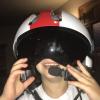HV Diagram Test Question
HV Diagram
49 members have voted
-
1. The principle reason the shaded area of a Height vs. Velocity Chart should be avoided is
-
turbulence near the surface can dephase the blade dampers.0
-
rotor RPM may decay before ground contact is made if an engine failure should occur.14
-
insufficient airspeed would be available to ensure a safe landing in case of an engine failure.35
-











Recommended Posts
Join the conversation
You can post now and register later. If you have an account, sign in now to post with your account.
Note: Your post will require moderator approval before it will be visible.